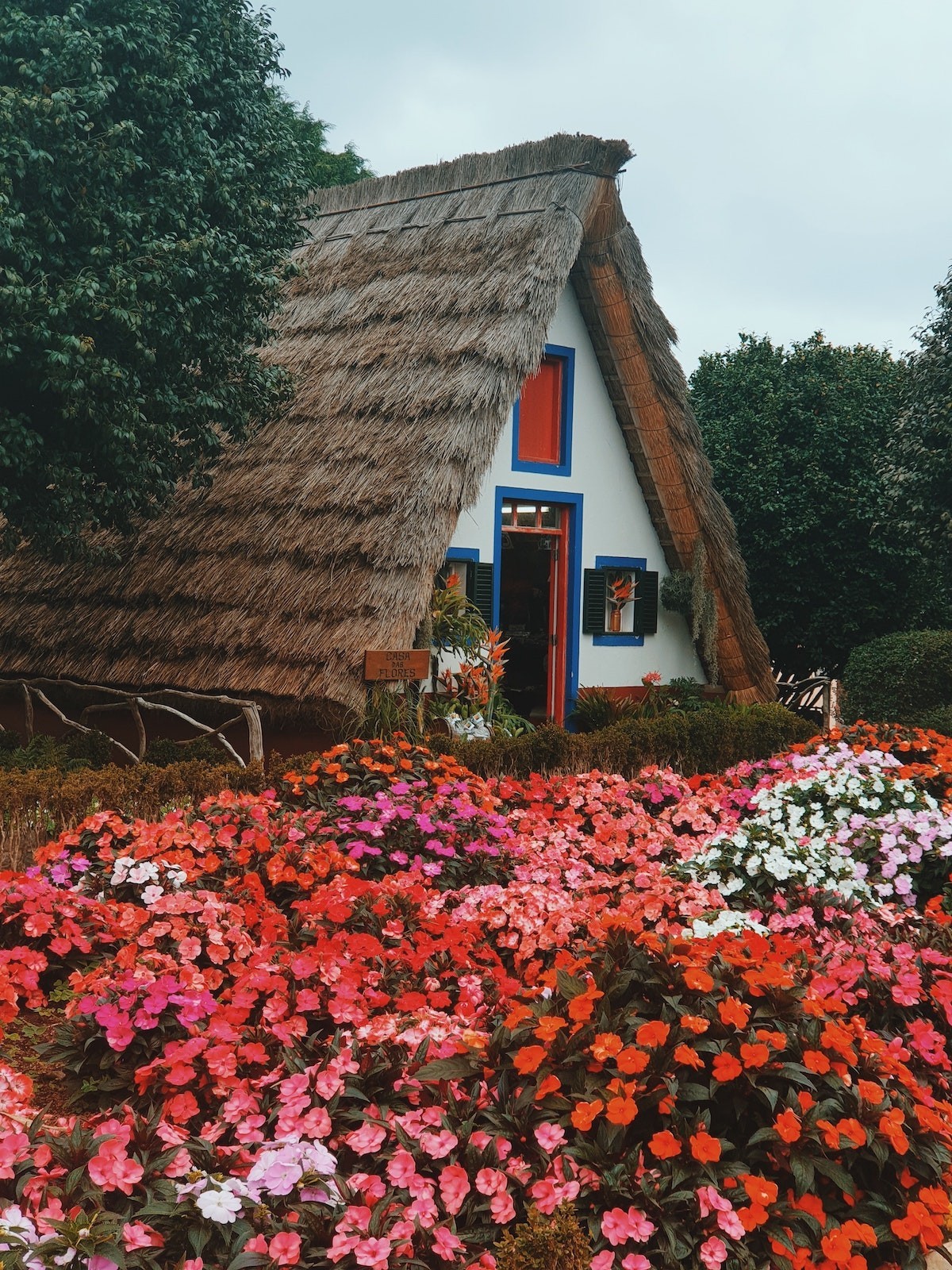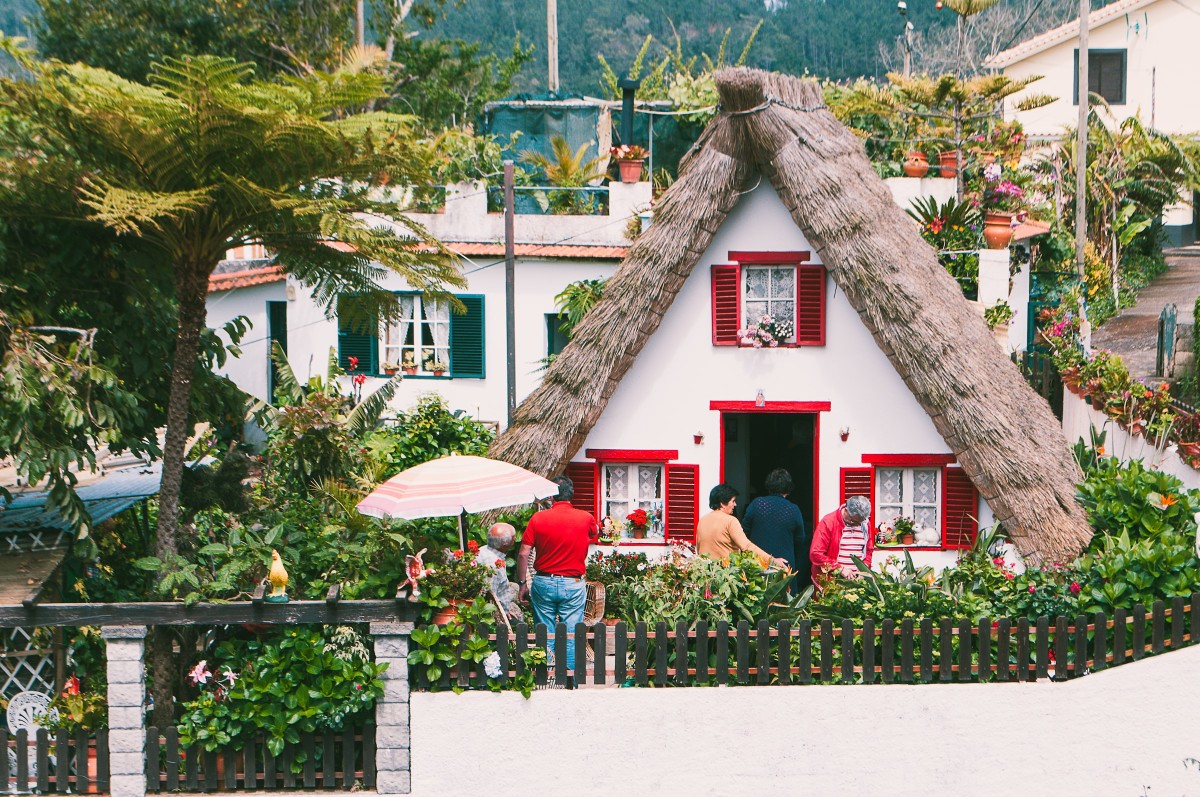
A trademark of Madeira Island, the typical houses of Santana are a real calling card to one of the most beloved places in the Atlantic Ocean. Although present in the municipality of Santana, these picturesque houses quickly became associated with the entire island and are well worth a visit. If you've never heard of them, we're here to tell you all about the traditional Santana houses in Madeira, including their history and what makes them so special. We will take you on a journey to discover these charming houses, finding out about their origin, main characteristics and understand why the typical houses of Santana are so loved across borders.
Typical houses of Santana: history, origins and construction
The typical houses of Santana, also known as thatched roof houses, are historical buildings whose origins date back to the century when Madeira was discovered. Although small, they were able to guarantee some well-being and comfort to the less well-off people of this autonomous region.
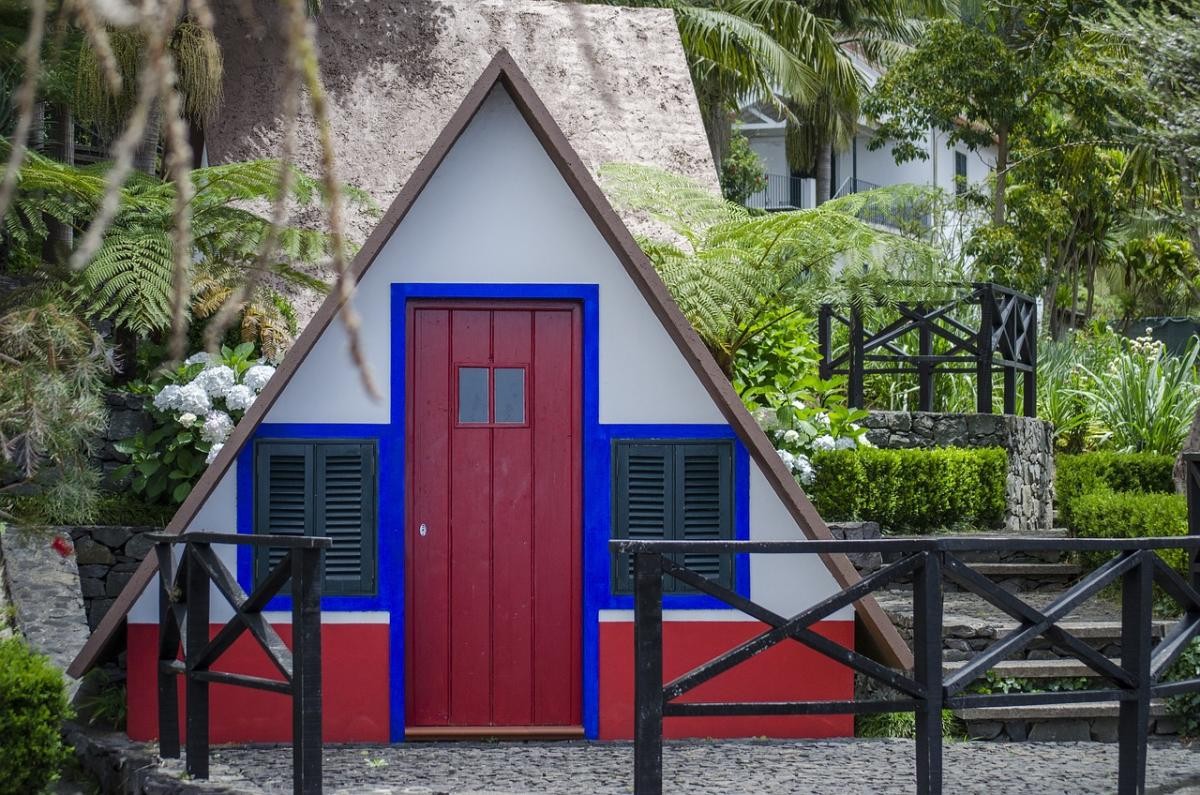
What are these traditional houses made of? It was in the north of the island that these colourful houses were born, made from materials that the Madeirans could quickly obtain by working in the fields. Wood is usually used for the house's structure and façades, while heather, wicker and thatch are used for the roofing and security inside.
The presence of thatch in the little houses of Santana came from the cultivation of cereals which, besides safeguarding the bread on the table, were used to form the roof of these remarkable dwellings. The process of tilling started with the selection of different types of wheat, which had to be firm. The straw was placed from bottom to top, being later necessary to trim it.
Main characteristics of the traditional houses in Santana
Santana's houses are well known from the outside for their triangular shape and unique colouring. Nowadays, it is less common to find these houses with the traditional interior design, which is gradually being forgotten by the younger generations and the constant changes that have been made to them.
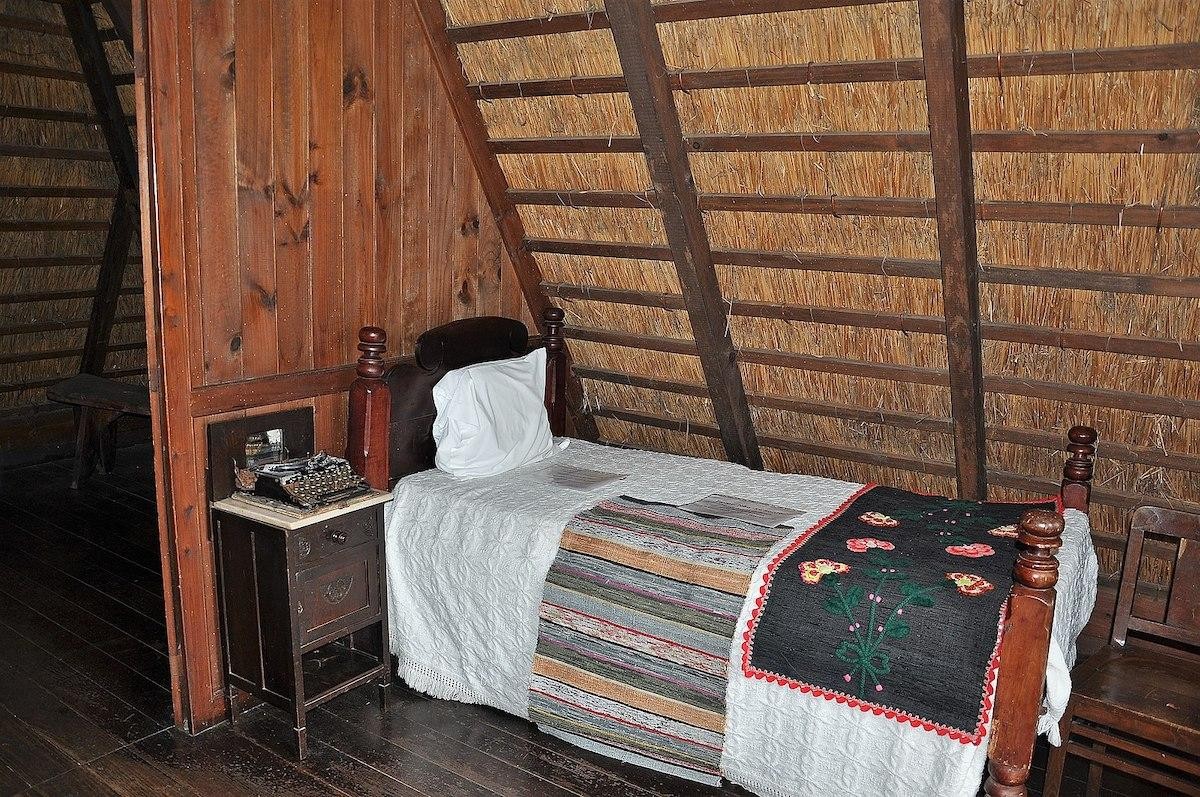
These typical houses in Madeira contain a loft, closer to the roof, which kept the house warm in winter and very cool in summer. In this room was the bedroom, used by the whole family.
The ground floor known in Madeira as "loja" had a humble living room and a cellar, which in some cases also allowed the storage of food such as bread and flour. Note that the kitchen should be separated from the upper floor, to protect the thatch from fire. In some cases, Santana's houses had a kitchen in a small outdoor complex.
The dimensions of a traditional Santana house
The dimensions of the houses in Santana are very variable, since each family built their house according to their possessions and the land they had at their disposal. The average dimensions are:
- Length: 7 metres
- Width: 4.64 meters
- Height: 4.4 metres
- Angle: 60º
Maintenance of a traditional Santana house
The maintenance of Santana houses must be constant and requires some attention to the thatch, which needs to be replaced every 4 or 5 years. This is because the heavy rain in winter and the high temperatures in summer can damage the straw.
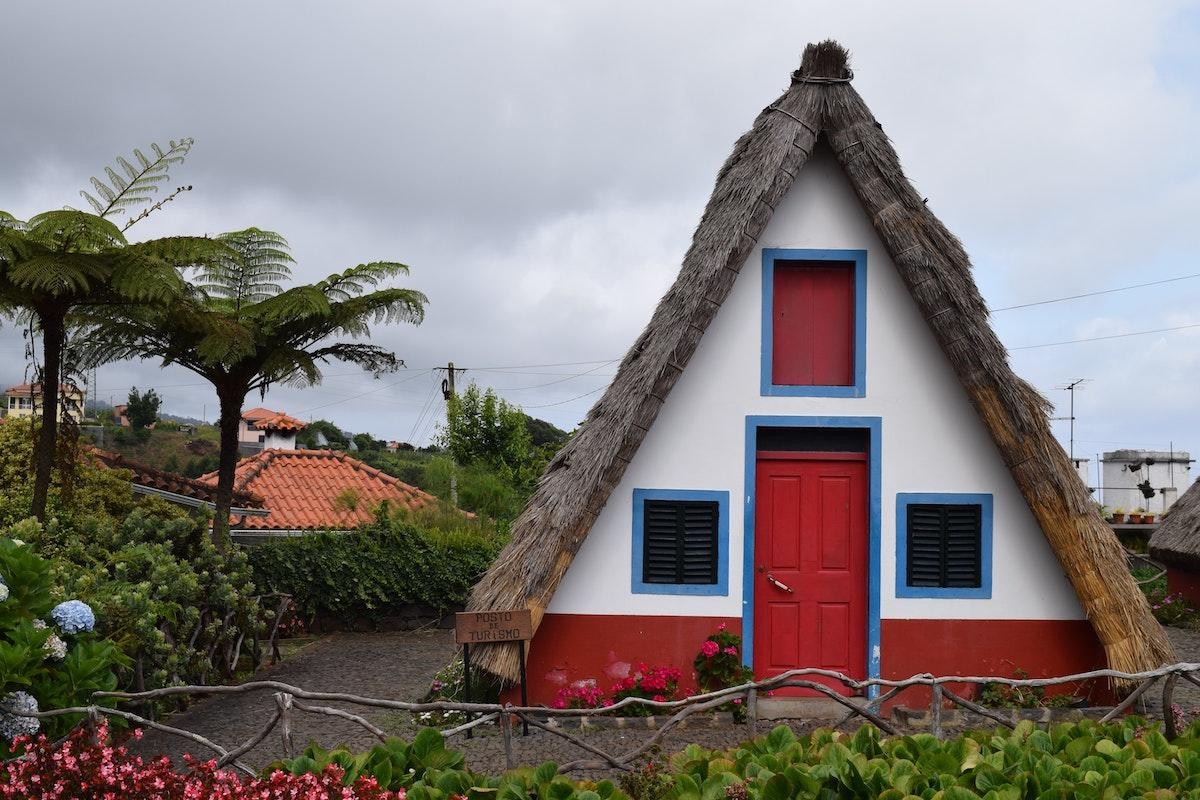
Despite its frailties, thatch offered advantages that ensured some quality of life for Madeiran families who tilled the land. Besides being a very light and quickly accessible material, it ensured a good indoor temperature in a very humid area of the island.
Santana Madeira property for sale: buy traditional houses
For some years now, the houses of Santana have almost completely disappeared from the landscape of the north of Madeira and you can count on your fingers those that are in their original state or similar.
If you are interested in buying a typical Santana house to live in or for holidays, you should know that they have been adapted to the needs of today. It is very easy to walk through the streets of the municipality of Santana and its parishes without knowing that some of its houses were once thatched cottages. Therefore, finding a traditional house for sale in Santana is a difficult task, but if you still like the area, we'll leave you with our selection of property for sale in Santana.
Where are the traditional houses in Santana?
Santana's charming houses can mostly be found in the town centre, near the City Hall. The best way to visit is by heading to the "Núcleo de Casas Típicas de Santana" which is a kind of open-air museum, where you can see the most iconic thatched houses in Madeira. It's open every day of the week from 9am to 7pm and you can visit the traditional houses of Santana that have transformed into souvenir shops. You can also take a tour of the whole island with a stop at these triangular houses.
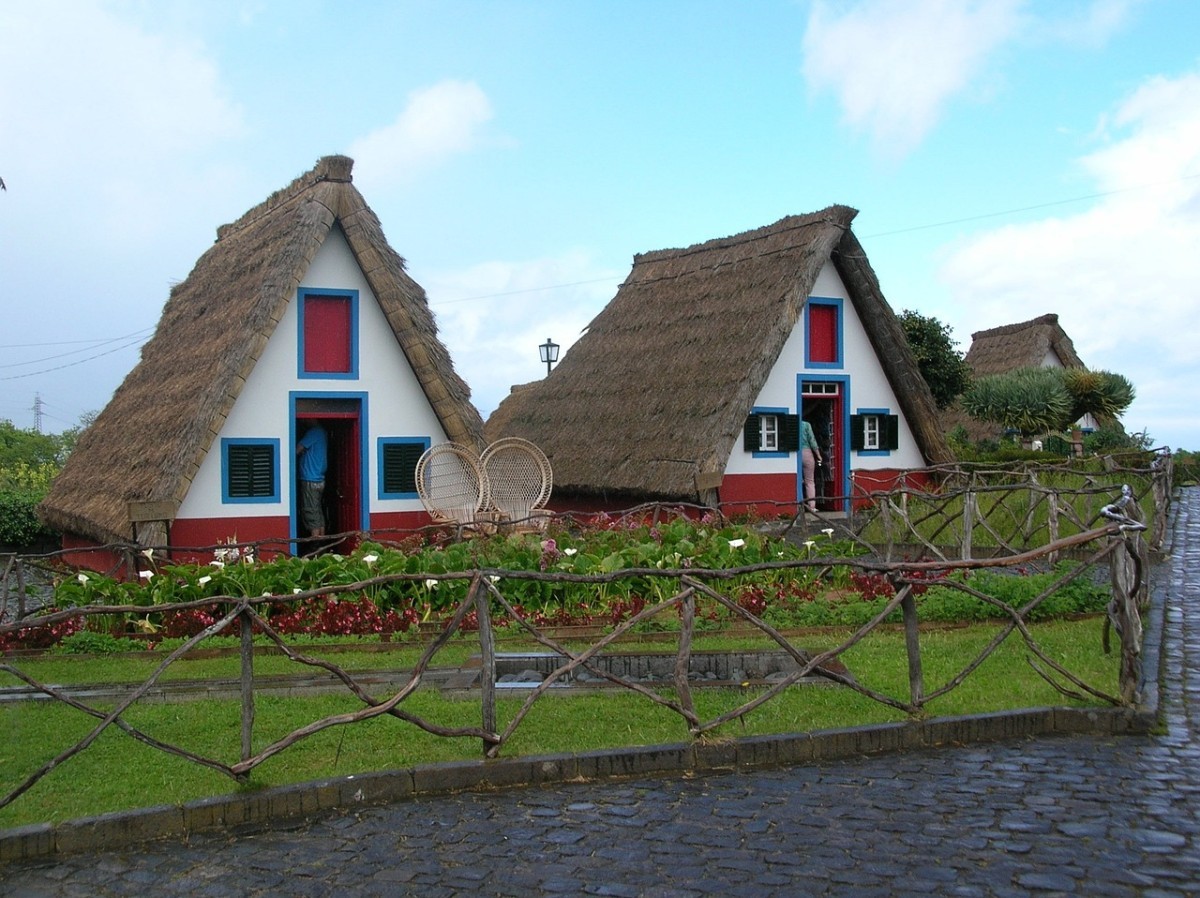
As well as discovering the history of these traditional houses and of the island of Madeira, this is also a fantastic opportunity to purchase some local products such as honey cake, fennel candies, poncha, beer bread and other local and handmade products.
Entrance to the Núcleo de Casas Típicas de Santana is free, but save some space in your wallet to buy a magnet or any other souvenir of the island. Whether to decorate your home, to offer as a gift or simply to remember these holiday days by looking at a photo of one of the places that will stay in your memory.
How far is Santana from Funchal?
When planning a trip to Madeira, it's best to either hire a car or book a tour where everything is organised for you. How far is it from Funchal to Santana? If going by car, the drive takes just over 40 minutes and is around 40km long. When it comes to public transport, there are also several buses that go from the island's capital of Funchal to the village of Santana, and depending on the bus, the journey time can reach up to 90 minutes.
